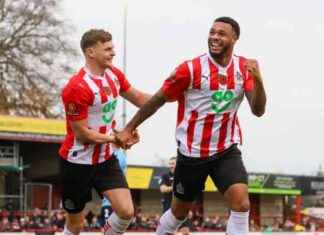Owners made two slight moves towards locked-out players, but put off major-ticket bargaining until later.
Tony Clark, the union head, attended negotiations for the first times since Dec. 2 when the workstoppage began.
Francisco Lindor and Max Scherzer, both New York Mets players, were among the 10 who attended a pair sessions over a five-hour period. None of these players spoke out publicly, contrary to union leaders Tom Glavine or David Cone during 1994-95 strike.
MLB has increased the offer of a bonus pool to pre-arbitration players from $5 million to $20million. This would go to 30 top players and is a fraction the $115 million requested by the union for 150 players.
The proposal to hold a lottery for amateur draft was also raised by clubs from the top three picks up to the top 4. The top eight picks have been requested by players.
The proposal by the teams to reduce domestic minor league contracts was also dropped. They also proposed to limit optional assignment to five players each season. The union opposed the proposal for minor leagues and requested a limit on four options.
They spoke for just 15 minutes the previous time the sides met. The parties described the talks as open and productive. However, the union saw the minor moves as disappointing.
MLB cancelled spring training games between February 26 and March 4. The union has been informed that a deal must be reached by February 28 to allow opening day to proceed as planned. Although players have not yet indicated whether they agree to the deadline, past experience suggests that a deal could be reached by early March which would allow enough training time.
This was the seventh session on core economics in the lockout. Talks will continue Tuesday at 1 p.m., when the 83rd-longest baseball stoppage will take place. The sides have only been able to reach an agreement on consecutive days once so far during the lockout.
The players are upset that payrolls in last year dropped to the lowest level since 2015. They want new mechanisms to encourage competition and spending.
The union was informed by the teams that they won’t increase the eligibility for salary arbitration, decrease revenue sharing, and will not create new methods for players of accruing service time. Players claimed these methods were necessary to stop teams from holding back players in order to avoid them being unable to claim delay-free agency.
The clubs also stated that they will not make any new proposals regarding luxury tax rates and thresholds until the end of negotiations.
The Cardinals’ Paul Goldschmidt and the Yankees’ Jameson Taillon were also among those who bargained in Roger Dean Stadium. This is the vacant spring training facility of St. Louis and Miami Marlins.
The location of negotiations is approximately 3 miles away from Scherzer’s home, where he is one of eight members of the union’s executive committee. From the executive subcommittee, Jason Castro of the Astros also attended.
Before entering the ballpark, Clark and the players met with Bruce Meyer, chief negotiator of the union.
The Colorado Rockies CEO Dick Monfort was present along with Ron Fowler (San Diego Padres vice chair), who is the immediate past chairman of the committee. The MLB delegation was led by Dan Halem (Deputy Commissioner), who was absent because Rob Manfred, the Baseball Commissioner, was not there.
During the session, players spoke directly with owners. Due to the pandemic, they had not been able to bargain in large numbers. They had previously joined in Denver in August, and Irving, Texas just before the expiration the five-year labor agreement.
All talks in the lockout were held at the New York offices of MLB and the Players’ Association. They were asked by the union to be moved to Florida in order for players to attend without interrupting their pre-spring training sessions.
Last Wednesday , big league spring training was halted by baseball’s ninth strike. This is the first since 1995.







